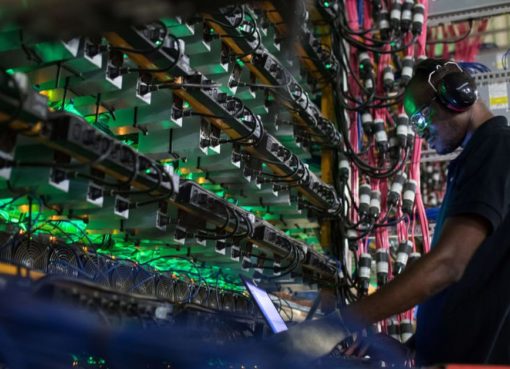Decentralized finance opened up a wide array of new opportunities for people in the crypto space. The most effective option for many users is the chance to earn passive income through DeFi staking. Users see this potential and want to take advantage of everything DeFi staking has to offer. In today’s world, building a DeFi staking platform is an excellent idea.
This article explains the DeFi staking process and the process of developing such a platform.
What is DeFi staking?
People interested in the DeFi industry should first learn about DeFi staking and the process behind it. DeFi staking is one of the best ways to generate additional income from crypto assets. This process is one of the accessible ways to leverage the benefits of decentralized finance.
DeFi staking is a powerful way to incentivize users to hold onto their crypto assets. In return for doing so, these users receive rewards (called ‘staking rewards’). This opportunity presented a better way to earn passive income over traditional savings account returns.
DeFi staking operates differently. In a DeFi staking platform, the user deposits their crypto assets to a Defi protocol. The platform shares a percentage of the commission as a reward to these users. This approach ensures the Defi staking platform maintains its liquidity and the liquidity providers earn interest. Services like yield farming and liquidity minting are similar to DeFi staking.
DeFi staking platform gives users the benefits of a decentralized platform like transparency, less third-party involvement, reduced transaction fees, etc. Additionally, many investors see this method as a safer way to earn passive income than traditional investments. DeFi staking is a better investment option as the system operates through self-executing smart contracts powered by blockchain tech.
Types of DeFi staking platforms available
Presently, there are three types of DeFi staking platforms in the industry. The concept of DeFi staking is unfamiliar to many, and as such, the staking mechanisms vary from platform to platform.
Stablecoin-centered DeFi staking platform
These platforms have their own Stablecoins ( Tokens with more excellent resistance to crypto market volatility). Here, yield farmers stake these coins against crypto assets. Then, the users borrow the assets and pay a commission to the platform. A portion of the commission returns to the investors as a reward. The best examples of this platform type are Aave and Compound.
Synthetic token staking platforms
Some platforms issue ‘synthetic’ assets with no relation to the blockchain. These assets include fiat currencies, silver, and gold. The platform then generates a token based on a physical asset and sells it on the market. Here, users can place these real-world assets in liquidity pools and earn interest.
DeFi Staking aggregators
These platforms are typical aggregators that provide information on various liquidity protocols and pools through one interface. This site helps users locate their assets and achieve the maximum return on investment. Zerion and Zapper are the best examples of this platform type.
Features for DeFi Staking platform development
The features you add during DeFi staking software development depend on the staking model you choose. Additional factors include the opportunities for users and the way you want to implement staking.
The features listed below are essentials to have for the DeFi staking solution.
User interface
A neglectful user experience is one of the most significant issues every DeFi platform faces. Users need to have a smooth and intuitive UI and enables them to navigate the site. This mindset applies to the look and feel of the platform along with the interface logic, information sent to users, etc.
Everything from the registration process to choosing the liquidity and staking pools should be clear to the user. Make it easy to view the relevant information on a dashboard. Users who can access more details can make an informed decision when choosing a stake. Consider Aave as an example; the platform shows chart information like market size, yearly interest paid on assets, and total borrowing.
List out supported assets and asset protection
DeFi staking platform development requires you to decide the assets your platform supports. Also, consider the third-party protocols to integrate into the platform.
Additionally, consider the security protocols you want to add. Users must feel that there are minimal risks from using this platform. Security is a decisive factor to many users looking for the right DeFi staking platform.
First, consider the security of the wallets and smart contracts. Glitches here are the primary reason why users lose their savings on DeFi staking platforms. Many startups make this mistake during DeFi staking platform development. They try to develop the platform with a limited team that cannot provide the required services. Excellent smart contracts need developers to have in-depth blockchain knowledge and expertise. Creating top-notch smart contracts requires the assistance of an experienced blockchain development team.
Reward calculation
The primary objective of liquidity providers and investors is to earn a profit. Hence they would want to know about the rewards earned from using your DeFi staking platform. It is essential to consider the way the site calculates dividends. Some platforms have a set percentage, and other areas put rewards based on market conditions.
When you build your DeFi staking platform, consider factors like the inflation rate, staking duration, coins shared by investors, and coins in the network.
Rewards calculations change depending on the platform. It is crucial to provide conditions where your site stands out from the rest. Additionally, consider embedding a rewards calculator in the user interface. That way, staking users can see the compensation they receive from investing.
Payouts
This feature is another essential one users will be interested in. Set out a clear interest payout schedule and the withdrawal procedure for users. That way, they have a clear understanding of when and how they get their rewards. Additionally, add a transaction history report for the users to track their activity.
The DeFi staking software development process
Start with an idea
The idea is the foundation for everything else. You define areas like the project goals, competition, essential and non-essential requirements, features, and target audience. This phase also requires you and the development team to share a shared vision for the project.
Design the user interface
This step requires the aid of professionals with experience in creating DeFi staking platforms. This phase involves time and patience resulting in a straightforward UI. This approach helps users navigate through the page and perform the required actions.
Develop smart contract protocols
This phase is one of the trickiest parts of DeFi staking platform development. Here is where you define and program the platform’s logic and functioning. Any errors in the smart contract drastically reduce the platform’s reliability. This part is where you must rely on a skilled blockchain developer.
DeFi integrations
This process is where you integrate DeFi protocols into the site. Ensure that the protocols are compatible with the platform and do not compromise the site’s security.
Front-end development
Here, the developers start to implement the user interface through the frameworks most suitable for the project.
Test and launch
Here, the QA specialists carry out the required tests and ensure the site works. This phase is where the team exposes any vulnerabilities, issues, glitches and provides the platform meets the required benchmarks. You can also implement a smart contract audit here and rely on third-party developers to carry out the task.
Final thoughts
There is no denying the increasing popularity of DeFi staking platforms and the growing interest in DeFi staking solutions. The appearance of better staking models and efficient staking platforms makes it easy for people to earn a passive income. Hence, it is no surprise that the industry is booming, and other organizations want to get in on the action.




